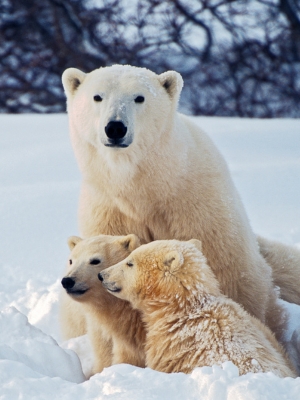In preparation for July 4th, many look forward to some relaxing pool time, refreshing sweet treats, and celebratory cookouts. For those people caring for animals – in sanctuaries, shelters, and private homes – July 4th is one of the most stressful days of the year thanks to the impact that that the deafening “bangs” and blinding lights of fireworks can have on animals.
According to the American Kennel Club, more companion animals go missing during July 4th than any other time of the year due to pets experiencing panicked states and attempting to flee. And it is not just companion animals who suffer these fearful responses. The United States Department of Veteran Affairs (VA) also acknowledges that those veterans suffering from PTSD following exposure to trauma in conflict zones can also be triggered by the overwhelming sounds and lights of fireworks.
Zoo Firework Nights Place Stress on the Captive Animals
While conscientious companion animal owners will prepare for Independence Day ahead of time by creating a safe space indoors with familiar toys, compiling a playlist of soothing music to help block out the noise, or even arranging anti-anxiety prescriptions through the veterinarian in extreme cases, some zoos around the world hold firework displays to “celebrate” holidays without regard for the animals under their care. This includes on July 4th in the United States and “Bonfire Night” in the United Kingdom, among others.
For example, AZA-accredited Happy Hollow Zoo in San Jose, California, posted a blog in 2019 stating that the animals at the zoo are largely unbothered by fireworks shows held by the zoo. They justify this claim by asserting that “Healthy animals have a considerable tolerance for stress. In the wild, animals must adapt to changing weather conditions, as well as competition for food, water and shelter from other animals… to them it is probably similar to experiencing a bad storm.” Here, despite the claims the zoo industry consistently makes to prioritize animal welfare as part of their mission, Happy Hollow Zoo acknowledges that the fireworks are an unnecessary source of stress for the animals. They go on to say that fireworks help “exercise their ability to run or hide,” (because the fireworks induce a fearful reaction in the animals) and that because of the disturbance fireworks cause, keepers will lock some species like fennec foxes and primates into their significantly smaller “night house” enclosures to limit the amount of noise exposure. Other zoos that will participate in fireworks shows in 2024 include the Ellen Trout Zoo in Lufkin, Texas and Busch Gardens Tampa Bay in Tampa, Florida.
Animals at the zoo with exceptionally sensitive hearing, like elephants, birds, and many aquatic animals, likely feel the negative impacts of fireworks the most. At the most basic level, fireworks can severely damage hearing and cause fear and distress, resulting in an increased heart rate and body temperature. They can also release a fine dust that can be toxic to inhale and worsen existing diseases, as fireworks frequently contain chemicals including ozone, sulfur dioxide, and nitric oxide, which have caused cardiovascular issues, respiratory damage, and even death in humans. The sudden, loud noises and flashing lights can startle animals, causing them to become disoriented, run into their enclosure features, or attempt to escape, resulting in serious injury or death. Numerous studies have confirmed that human-caused noise must be considered a serious and potentially behaviorally disruptive factor for animals- especially in an artificial environment in which they cannot fully escape stressors, like a zoo. Excessive noise negatively affects a wide range of species and likely impacts the communication, distribution, foraging, and maintenance of basic bodily functions in animals. Noise-induced cortisol increases (a hormone associated with stress) have been observed and can cause a multitude of serious health issues, including immunosuppression, insulin resistance, cardiovascular diseases, and intestinal problems. Despite some zoos marketing their displays as featuring “bang-less” or “low noise” fireworks, these can still make disruptive noises and cause intense light exposure as they explode.
Fireworks Also Negatively Impact Animals in the Wild
The negative effects of fireworks do not stop with animals at the zoo; we see extremely damaging and potentially fatal consequences from fireworks even with animals that can escape the noise. For example, according to Humane Society International, predatory birds, like bald eagles, perceive the harsh sounds and lights from fireworks as a threat, and may abandon their nests. The explosions may cause other birds to take flight and abandon their habitat for prolonged periods of time. Fireworks have even frightened birds into flying so far out to sea that they did not have the energy to make the return flight. Further, casings and heavy metals left behind by fireworks are often mistakenly consumed by wildlife or fed to their young. Many of these materials are indigestible, present choking hazards, or are toxic to animals. Fireworks also harm the surrounding environment; pollutants can be washed into waterways and contaminate drinking water for the animals that rely on it.
Let’s Find Kinder Ways to Celebrate
To be an advocate for animals is to take their needs seriously; we know that animals are terrified by fireworks, and this should inform our actions. There really is no reason for us to subject animals to harm in the interests of a trivial desire to watch some lights in the sky. To belittle or falsify animals’ negative experiences during fireworks (and all other disruptive events held at zoos to make a profit like concerts, light shows, and after-hours access to animal exhibits) is wrong. Join us in calling out zoos for promoting the harmful claim that these types of activities do not adversely affect animals in captivity, as we know that they impact all other groups of animals – from domesticated to wild, and every being in between.
Keep Wildlife in the Wild,
Devan
Dear Reader,
We are a nonprofit committed to wildlife conservation, welfare, and rescue. Making resources free and widely distributed, like our news items, is an important part of our mission. If you found this article helpful, enjoyable, or enlightening, please donate to help keep these resources available, and Keep Wildlife In The Wild.
Thank You,
The Born Free USA Team

 Dear Reader,
Dear Reader,